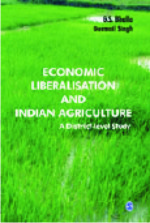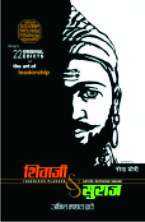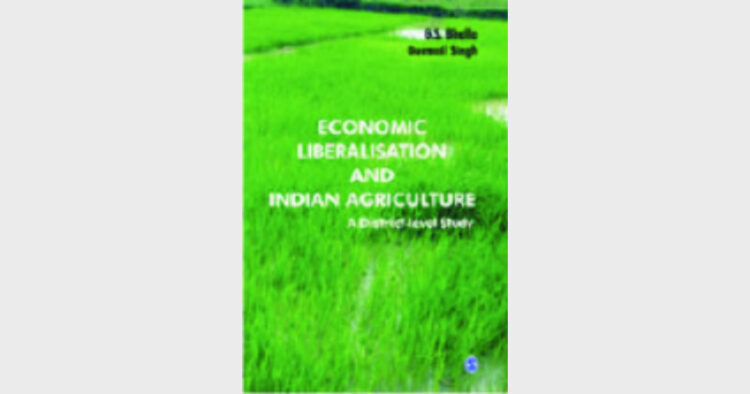Manju Gupta
 Economic Liberalisation and Indian Agriculture: A District-Level Study, GS Bhalla & Gurmail Singh, Sage Publications, Pp 360, Rs 795.00
Economic Liberalisation and Indian Agriculture: A District-Level Study, GS Bhalla & Gurmail Singh, Sage Publications, Pp 360, Rs 795.00This book, written by renowned agricultural economist, Prof GS Bhalla and his colleague Prof Gurmail Singh offers insights into the functioning of Indian agriculture under district policy regimes, bringing out its transition from pre-to post-Green Revolution and the deceleration from pre-to post-liberalisation period. It makes an assessment of the performance of crop production, crop diversification and geographical spread of growth over a period of time, ranging from 1962 to 2008.
The growth and productivity performance of agriculture at the national, regional and district level during the post-reform method is analysed with those of the Green Revolution period. The authors explain that long-term (1962-2008) growth rate of crop production at 2.46 per cent per annum was achieved mainly due to the cropped area and irrigation expansion in the pre-Green Revolution period, adoption of seed-fertiliser-based technology along with irrigation expansion and shifts in the cropping patterns from low value to high value crops in the post-reform period. This pace of growth, however, could not be maintained in the post-reform period. So it declined from 3.17 to 2.77 per cent per annum in almost all the states except for Gujarat, Maharashtra and Jammu & Kashmir. “The slowdown is due to decline in public investment and the failure to make fresh breakthroughs in technology,” the authors claim.
Thus the main focus of the study is to analyse the changes in the regional patterns of levels and growth of agricultural output at the disaggregated state and district levels in the post-reform period from 1990-93 to 2005-08 as compared with those during the pre-reform period from 1980-83 to 1990-93 as well as with those of the initial period of Green Revolution. This constitutes the major thrust of the first chapter.
The second chapter analyses the spatial pattern of changes in Indian agriculture at the state level, during various periods, as also the growth in the cropped area, output and yield of major corps and the changes in the cropping patterns at the all-India and state levels.
The third chapter analyses the yield levels of all the crops taken together at the disaggregated district level in order to study the problem of spatial variation in agricultural productivity and examines the association between the levels of productivity and use of modern farm inputs at the district level.
Chapter 4 carries a district-level analysis of tfhe spatial patterns of growth.
Chapter 5 compares the levels and growth of agricultural workers’ productivity at the state and district levels. Besides comparing the spatial patterns of levels and growth, attempt is made to analyse the nature of association between levels and growth of agricultural workers’ productivity and the use of modern inputs.
Chapter 6 presents the conclusion and recommendations.
The authors’ advice is that in view of the serious implications as expounded upon in the earlier chapters, policymakers should adopt policies to reverse the trend towards deceleration of agricultural growth and rejuvenating agriculture in different regions of India.
This is a very subject-specific book meant for agricultural scientists and policymakers.
(Sage Publications India Pvt Ltd, B1/I-1, Mohan Cooperative Industrial Area, Mathura Road, New Delhi–110 044; www.sagepub.in)
Draupadi of Mahabharata or Shruti of 21st century Woman has to fight?
Manju Gupta?
 The Edge of Desire, Tuhin A Sinha, Hachette India, Pp 321, Rs 195.00?
The Edge of Desire, Tuhin A Sinha, Hachette India, Pp 321, Rs 195.00?Here comes a novel portraying male chauvinism and how a woman struggles to fight against it. It presents her very moving and touching emotional journey. The protagonist in the novel is named Shruti Ranjan, who is a former journalist from Delhi and who, after finding her boyfriend in bed with her best friend, moves back to her hometown to live with her parents. They persuade her to move on and get married. She is stunned at this, but one day she receives a call from her boyfriend Abhay saying that he is getting married to Antara, her best friend that she agrees to meet Rohit, an IAS officer. Due to constant pressure from her parents, Shruti succumbs to their suggestion and agrees to an arranged marriage with Rohit, Deputy Commissioner of Kishanganj. This is a small town in Bihar that’s not ruled by the state government but thugs instead and with the local authorities helping them. Shruti gets married and events take place that lead to the most traumatic period in her life. While living with her husband Rohit, she remembers how she had been ditched by Abhay despite living together for five years as soon as both of them had completed a course in Mass Communications. She admits that “living with him I so enjoyed the comfort zone that his company provided that I never realised we were growing apart. We had our differences, some, but by then, my emotional attachment to him was so strong that it didn’t matter what kind of man he really was.”One day she finds that an even takes place which eventually ends in her taking a completely different direction than the one she ever could have imagined. She is brutally raped by a “politically sheltered local goon”. Her attempts at getting justice are crushed by a corrupt and complicit state government. That’s when the charismatic Sharad Malviya, a leading member of the Opposition party, offers an unlikely solution – his party’s ticket to contest the Lok Sabha elections.Left with little to choose from, Shruti agrees only to realise that being catapulted to an enviable position of power in an all-man’s world comes at a price. (Hachette Book Publishing India Pvt Ltd, 4th/5th, Floors, Corporate Centre, Plot No. 94, Sector 44, Gurgaon–122003. www.hachetteindia.com)?
A gripping study of Shivaji in modern context?
Manju Gupta?
 Shivaji va Suraj (Hindi), Anil Madhav Dave, Prabhat Prakashan Pp 231 (HB), Rs 500.00?
Shivaji va Suraj (Hindi), Anil Madhav Dave, Prabhat Prakashan Pp 231 (HB), Rs 500.00?This book presents the story of the great Maratha warrior, Chhatrapati Shivaji Maharaj who was a capable administrator and successful ruler. By helping to build the Hindu society on the foundation of just and able rule, Shivaji has left an indelible mark on India’s history. The book highlights those qualities of Shivaji which made him into a great ruler and speaks of the improvement that his policies brought about in the lives of his people. It is said that a ruler is called a leader on the basis of how successful he is in overcoming all adversity. Since childhood, Shivaji had dreamt of making his country independent. At the young age of 16, he fought his first battle and occupied Torna fort. This gave a boost to his morale and he captured many other forts subsequently. He defeated generals like Afzal Khan and laid the foundation for Maratha rule after working hard to win freedom for the country. With his extraordinary personality, he encouraged ordinary men to do exceptional work as he possessed the ability to judge the inherent talent in a person and assist in development of multifarious skills in him.This book presents a comprehensive account of Shivaji’s life, his style of rule, his ministries, his mode of judging social problems and his views on democratic rule. Shivaji lived for only 36 years and if the time he spent on fighting wars and conquering regimes is taken into account, then his peaceful rule lasted only six years. The remaining 30 years he spent in building the framework for establishing swarajya.Shivaji owned more than 300 forts as the end of his life but not even one fort belonged to his relatives or friends, whereas Aurangzeb had put up his relatives, both close as well as distant, as owners of the forts he had conquered. What is more notable is that while Aurangzeb was proud of his Turkish heritage, Shivaji was proud of his beliefs, tradition and language. The kingdom that he established was not called Konkan or Maratha kingdom; he called it Hindu swarajya. For the maintenance of these forts of which he was very fond, he chalked out five rules and regulations. Moreover, as he spent nearly 70 per cent of his life in these forts, he is known also as the ‘ruler of forts’. Is it any wonder that historian Prof. Sircar had written an article titled ‘The Legacy of Shivaji’ in Modern Review of 10 January 1910, saying, “Each and every item of his entire kingdom, both moveable as well as immoveable, had been preserved with exceptional care, which depicts his serious endeavour to maintain public property.”Another important aspect that the book highlights is Shivaji’s respect for women whom he never dared to trouble even a wee bit. While Adil Shahi, Qutub Shahi or the Mughals captured the women to keep them in their harem or married them temporarily before handing them over to their general and others subordinates, Shivaji ensured that the women prisoners whom he released were sent to their respective homes with respect and honour. The French traveller Francis Bernier has said that Shivaji did not believe in communalism or any narrow-mindedness. Shivaji saw to it that security was provided to all, more so to a Dutch widow and other women in her family when her husband died. He appointed soldiers to keep guard and promised “to ensure that they were allowed to live in peace, free of worry.”Another unusual feature of the book is though incidents from Shivaji’s life and his qualities are stressed upon by giving a detailed account of his life, some very interesting articles on economic, political and social issues of today are interspersed between the texts of Shivaji’s life. (Prabhat Prakashan, 4/19, Asaf Ali Road,, New Delhi-110 002; prabhatbooks@gmail.com)?













Comments